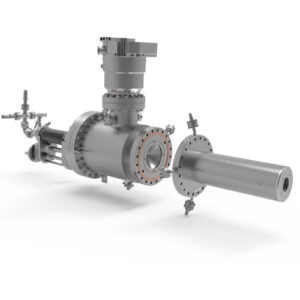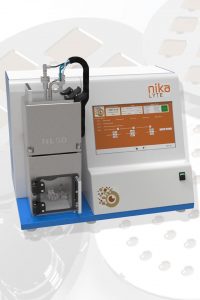Deposition in the context of nanoparticles refers to the attachment of nanoparticles to solid surfaces called substrates. This creates a coating of nanoparticles that can have a multilayer or monolayer and an organized or unorganized structure based on the coating technique employed. In this article, we describe nanoparticle deposition systems and their key qualities.
Nanoparticles can be made from a range of materials such as polymers, metals, and ceramics. Nanoparticles have very high surface energy, due to their small size (1-100nm), which is an advantage for applications such as catalysis and sensing. However, nanoparticle stability can be a challenge as nanoparticles will often try to lower their surface energy.
Nanoparticles usually stabilize themselves via molecule sorption from the surroundings or decreasing the surface area via agglomeration and coagulation which is generally not desirable. Embedding nanoparticles in a matrix or thin-film can help to reduce this problem.

Techniques of Nanoparticle Deposition Systems
There is a range of different coating methods that nanoparticle deposition systems employ.
Gas Phase Synthesis
Gas-phase synthesis is a type of nanoparticle deposition that produces metallic and conducting oxide nanoparticles with an extremely narrow size distribution. This process involves quenching a hot metal vapor through a flowing stream of cool inert gas. The vapor cools via frequent collisions with inert gas atoms and condenses to form nanoparticles. [1] Gas-phase synthesis occurs under high or ultra-high vacuum and thus produces high purity nanoparticle coatings. The Nikalyte NL50 and NL-UHV generate nanoparticles using gas phase synthessis.
Spark Ablation
This technology is a physics-based process that generates pure particles in a controlled setting without using chemicals. Carrier gas flows past two electrodes of conductive material where an electrical spark creates a plasma that ablates a small amount of materials from an electrode. This material forms a concentrated stream of nanoparticle aerosol and these particles then combine to form bigger particles. The nanoparticles are then deposited onto a substrate by diffusion, filtration or impaction.
What is Thin Film Deposition?
The thin film deposition process involves creating and depositing atoms onto a substrate material to form a compact two-dimensional layer. These thin films can be made from a range of materials including compounds, oxides, and metals.
The various characteristics of thin films are used to enhance or alter the substrate performance. For example, some coatings are transparent, some increase the conductivity of transmission of signals, and some are scratch-resistant.
The Differences Between a Nanoparticle and Thin Film Deposition System
Nanoparticle deposition systems create coatings that are three-dimensional and more porous than those of thin films. They also offer a rough surface with a higher surface area than thin films. The properties of nanoparticles coatings are strongly influenced by the nanoparticle size and structure and as a consequence, they behave very differently to thin-film coatings made from the same material.
The Benchtop Nanoparticle Deposition System from Nikalyte

The Nikalyte benchtop nanoparticle deposition system was created to work for your research application. The instrument can generate a coating of non-agglomerated ultra-pure nanoparticles. If you would like to find out more about how this deposition system would work with your nanoparticle coating applications, get in touch with the team at Nikalyte today for more information.
[1] Nanoparticle Synthesis by Terminated Cluster Growth – Plasma Applications Group. (2022). Retrieved 21 March 2022, from http://pag.lbl.gov/Research-Topics/newsitem1

